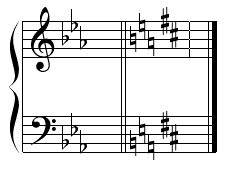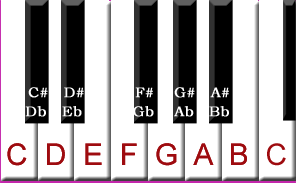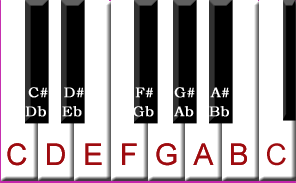How to Use Simple Math to Find The Sharps and Flats Key Signature Math is a fundamental principal that is used in creating a new key signature that adds one sharp at a time or one flat at a time. Each key change that adds one new sharp is done by moving a perfect fifth from our current key signature root. If we start with the key of C, where we have no sharps or flats, and move to the perfect fifth, which is G, it will add one sharp. So what...
Key Signatures Overview
What the ‘Keys’ Are All About Many music students struggle with key signatures, however, over time they eventually learn many of the keys and associated scales. At the workshop we promote an easy way to develop the change in keys and then how to remember the key names. This helps to put the foundation in place so that when you run across a new key signature you are well ahead of the pack when dealing with your new song. The steps...
Major Harmonic System
Chords and Scales Combined to Make a System a.k.a- The Major Diatonic Harmonic Systems First some definitions: Harmonic system for our purposes means the notes that make up a scale. Diatonic – means progressing or sequence (belongs to), in our case the progression of notes in a major scale. We will use the short version and assume diatonic in our discussions. Chords are Created with the Scale Notes Simple things to remember when you...
Music Theory Sharps and Flats
Applying Sharps and Flats to Notes Note Names: We need to start the music theory sharps with the notes that are used in modern music. There are 7 basic note names. The 7 note names are: A B C D E F G These notes are repeated over and over again on the staff or a keyboard and modified for chord or scale conditions. We will use an octave of the keyboard to explore sharps and flats. Note Sharps and Flats There are 7 base note names can each also...
Pentatonic Scales
The Five Note Scale Penta meaning five is used to describe a scale with five notes. Thus this scale its name of Pentatonic. This section describes the most common use of this five note scale. The concept of the pentatonic is to use 5 notes within an already known major scale. The note choices will also be found in many other scales. Thus providing you with a scale that may be used in place of other scales with more notes. There are two...
Minor Harmonic System
Chords and Scales Combined to Make a System for Minor Keys a.k.a – The Minor Diatonic Harmonic Systems Moving to and learning these systems is often reserved for advanced students. It is something that can be taught early and give a student a much needed boost to there theory and master of music. As before the definitions apply. Review the major harmonic system for the process and procedure to create harmonic systems. It will apply for...
Basic Music Theory Elements
Elements You Need to Start Learning Basic Music Theory There are music elements that form the basic understanding of music theory that you have to study in order to determine how music is played or constructed. These basic elements are the structure and framework for which music is formed. Knowing these elements is what allows you to study, play, compose, reharmonize, and work with other musicians in a common language. This part of the the...
Scale Modes
7 Inversions Just to Get Another Sound The scale modes seem to be one of the hardest things to comprehend by the music students. They really are just inversions of the major scale which start on the next note in the scale and play all the same notes. What happens is that the intervals change form major to minor all over the place. This seems to the most confusing part of learning the modes. Modes date back to the ancient Greeks where four of...
Whole Tone Scales
The Dreamy Scale Striking out in the oppose direction from diminished notes is augmenting or stretching the notes. Augmenting a note is to raise it a half step. This is what the this scale is all about when compared to a major scale. The scale of the whole tones have a dreamy quality all there own. The diminished scales have a tension and horror film sound to them, but the whole tones takes us just the opposite way. As derived from the name...
Music Theory Intervals
The Distance between Two Notes Let’s explore the element of music theory intervals. The distance between two notes is the determination of an interval. What is special about intervals is that they are easily defined and shown by the number of half steps from a starting note. We are not going to attempt to explain the pitch differences but only explain the interval idea. The names will give clues and explore them in wikipedia will give...
Scale Formulas
Scale Math for to Build Your Knowledge This page is a quick reference to build scales with the math formulas. Types of Scales There are several types of music scales they are: Chromatic Scale Major Scale Minor Scales (harmonic, natural or relative, and melodic) Diminished and Polytonal Scale Whole tone and Pentatonic Blues and Gospel Scale There are others as you build your advanced theory. Music scales are the structures that make up which...
Music Theory Master Staff
Mastering the Master Staff Easier than You Think One of the most challenging things that students go through is learning the notes on the master staff. There are the association methods used such as the old favorite every good boy does fine, or FACE. What’s missing is the a good way of making sure you learn the bass clef and treble clef relationships at the same time. We’ve created a course on Mastering the Master Staff within the...











